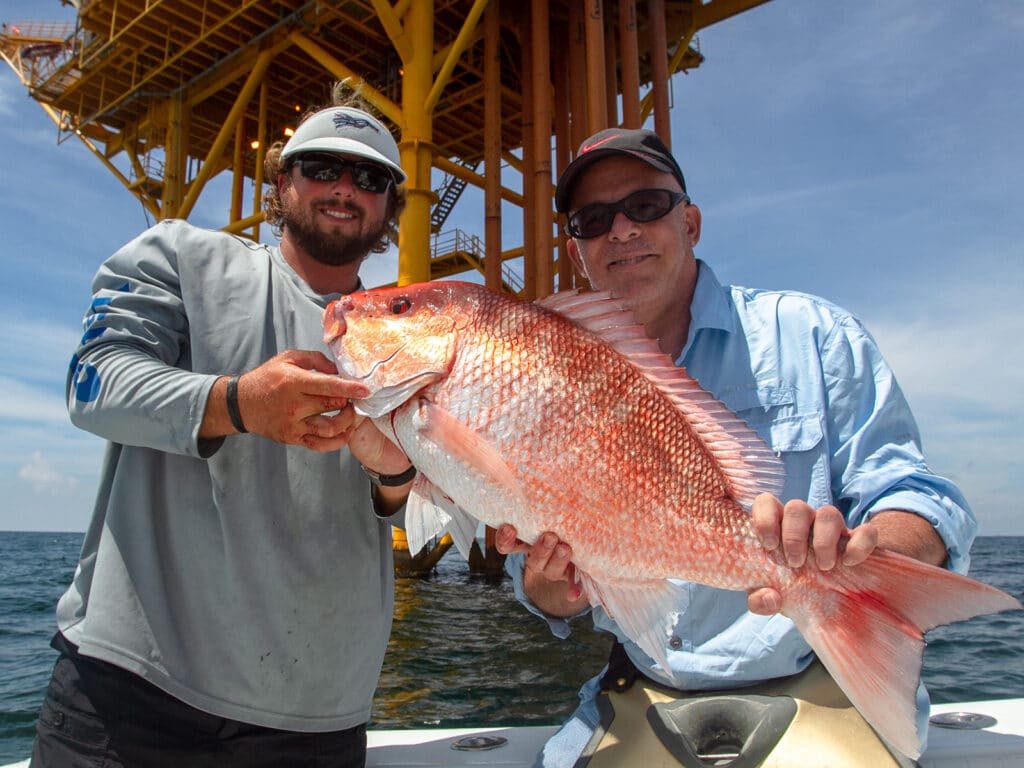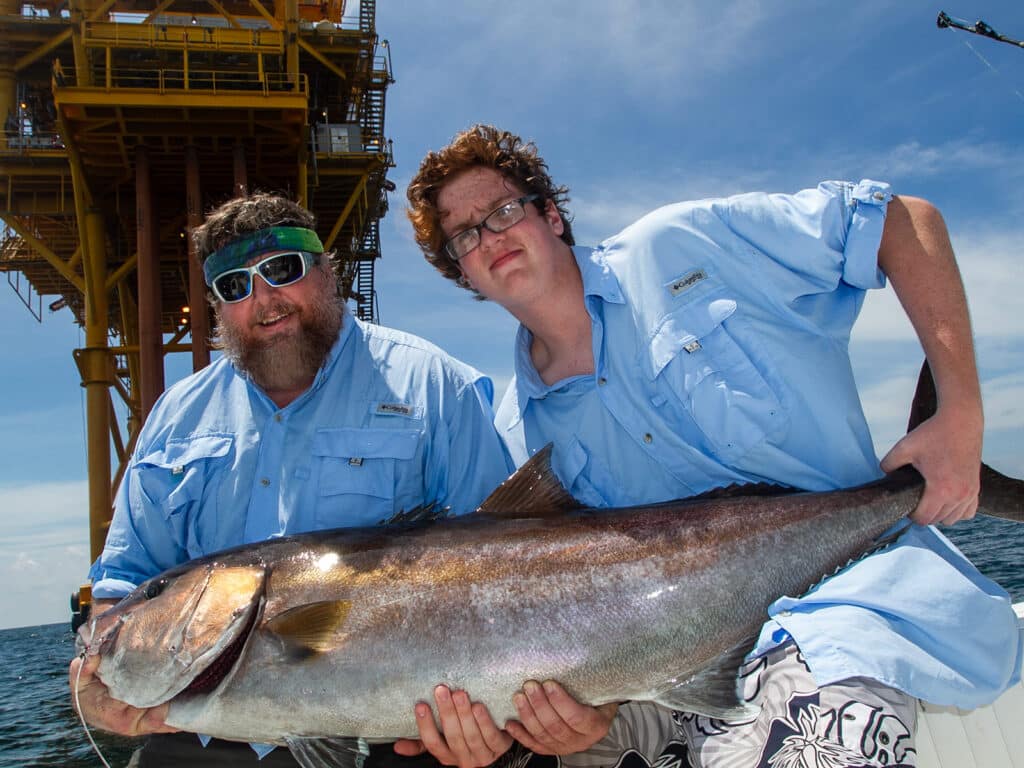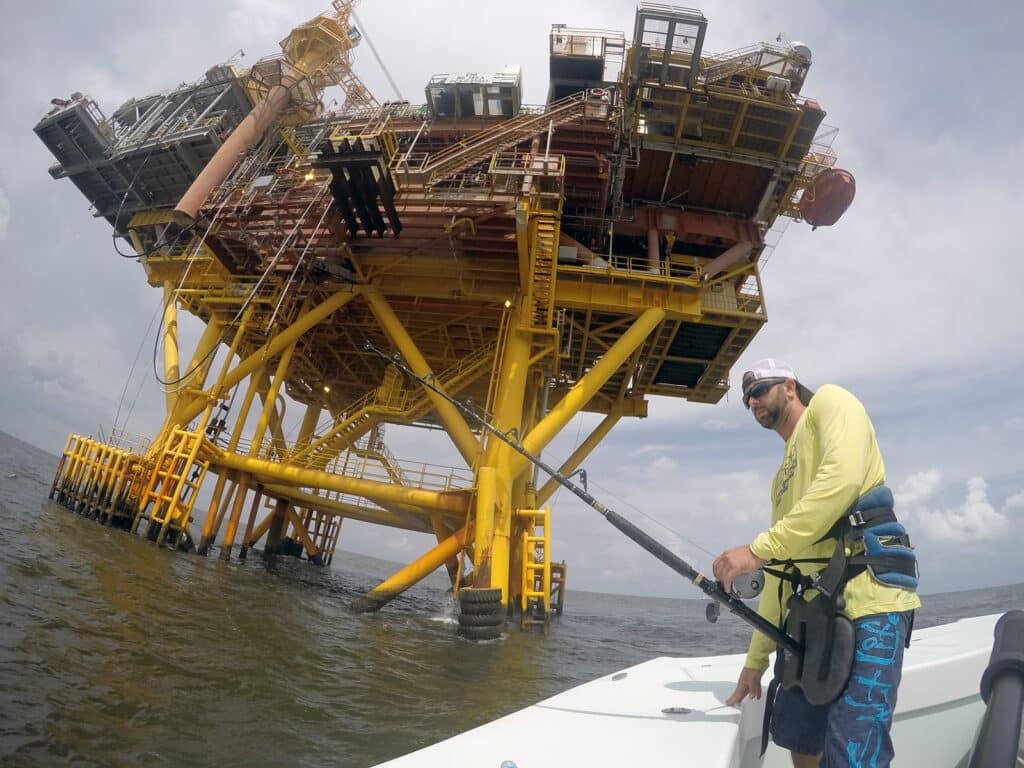
Only our federal government could come up with a rule that mandated the removal of wildlife habitat in a time when it concurrently, actively sought to enhance wildlife habitat. Ultimately, optimistically, that confusing tide was turned 40 years ago with creation of the Rigs to Reefs program.
It’s been nearly 70 years since the first offshore oil production platform went online in the Gulf of Mexico. Since then, thanks to tremendous foresight and investment on the parts of major oil-and-gas producers, that number climbed from one to more than 7,000 rigs — and then declined as wells beneath many of those platforms dried up, which is their inescapable fate.
Rigs to Reefs
As some wells became unprofitable, our government forced drillers to dismantle and remove the platforms and any evidence thereof, leaving nothing but an acre or two of bare-sand bottom. And as quickly as ridiculous amounts of money and labor were invested to deconstruct these structures and haul them as scrap to shore, so also disappeared the tremendous amount of marine life each of them supported.
Fast-forward to 1979, when Florida became the first state to convert a non-productive, outer continental-shelf platform into, well, what it was all along — an artificial reef. And forward again to 1983, when the Minerals Management Service came onboard with support for what’s now called the Rigs to Reefs and then to 1984, when the National Fishing Enhancement Act embraced Rigs to Reefs in support of marine life off the shores of all five Gulf states.
The Gulf of Mexico Needs Artificial Reefs

Exclusive of its only active, deep-water coral reef, the Flower Garden Banks National Marine Sanctuary off Texas, the Gulf provides little anomalous structure for its plentiful fisheries. A pile of rocks here, a ledge or sunken shrimp boat there, but otherwise little life-supporting structure.
Almost anything that breaks up a seascape quite desert-like except that it’s covered in water becomes refuge for any creature that finds it. Fish and corals and sponges, turtles and marine mammals all gather around whatever they can find in hope either of eating or avoiding being eaten.
That “almost anything,” historically and not always lawfully, has included everything from washing machines and refrigerators to abandoned cars, retired ships and even military tanks. Sometimes these items were placed with permission and permits, and other times they “accidentally” fell off the sterns of boats that left port under cover of darkness.
A Worldwide Model for Artificial Reefs
However, wherever and whenever, though, all those structures drew and held fish. And now, in combination with other programs that plant smaller concrete structures and still sink decommissioned ships, Rigs to Reefs is gaining the traction it has long deserved toward becoming the benchmark against which artificial reefs worldwide might be measured.
Rather than entirely remove non-productive rigs within a year, which remains federal rule despite astronomical cost to drillers and ongoing effort to have it dismissed, MMS now recognizes Rigs to Reefs as a legitimate alternative and allows three ways to accomplish the conversion.
NOTE: Not every non-productive platform is eligible for the program. For various, legitimate reasons, some structures need to come out. But most, overwhelmingly most, are candidates for conversion under Rigs to Reefs.
How Rigs Are Turned Into Reefs

- The first approved and least complicated strategy is to simply topple the structure in place, which is done with explosives planted several meters beneath the gulf floor to minimize damage to resident marine life.
- The second involves divers cutting enough off the top portion of the structure so that the remainder doesn’t interfere with marine traffic, then towing that top half elsewhere, essentially creating a second structure.
- The third tactic is to release the entire structure from the sea floor, haul it to a more desirable location, then lay it on its side.
Under any of these plans, the savings to oil companies are potentially millions per platform. The benefit to marine life, in perpetuity, is incalculable. As of December 2021, the number of rigs turned to reefs sat at 573. And typically, according to a Coastal Marine Institute study, each of those reefs supports roughly 12,000 to 14,000 fish.
The Future of Rigs to Reefs
Effort is underway now among many conservation groups, including state chapters of Coastal Conservation Association, to have our Congress eliminate or at least pause the antiquated and short-sighted law the calls for non-productive platforms to be hauled to shore in a year. The paperwork for Rigs to Reef participation takes considerable time. And of all the issues facing Congress now, this one should generate the least division among senators and representatives of opposing politics.
Rigs to Reefs benefits everyone who enjoys deep-water fishing and diving and provides critical habitat, if those numbers are right, to about eight million fish and countless other marine animals. Within a government rife with confusing and sometimes curious laws, Rigs to Reefs cuts right through the red tape between Washington to effectively beautify and enhance the deep-blue Gulf of Mexico.








